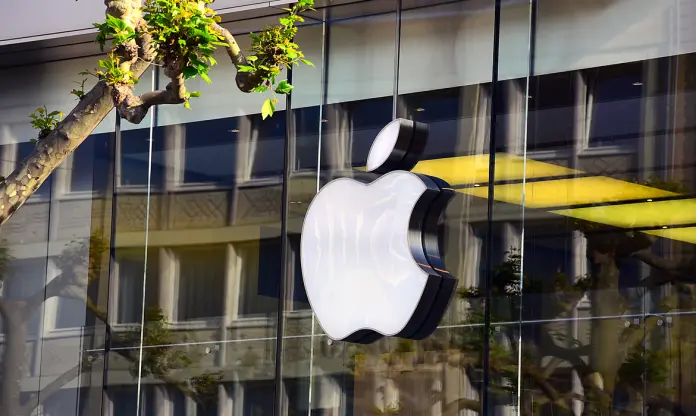On September 25, 2020, the Commission filed an appeal before the Court of Justice of the European Union (case C-465/20 P) against the judgment of the General Court (“GC”) of July 15, 2020 annulling its Decision on the state aid granted to Apple by Ireland. A few days ago, the arguments put forward against the judgment of the GC were made public.

Don’t miss our content
SubscribeOn September 25, 2020, the Commission filed an appeal before the Court of Justice of the European Union (case C-465/20 P) against the judgment of the General Court (“GC”) of July 15, 2020 annulling its Decision on the state aid granted to Apple by Ireland. A few days ago, the arguments put forward against the judgment of the GC were made public.
The appealed judgment is available here (cases T-778/16 and T-892-16) and the annulled decision of the Commission here.
The Decision of the Commission
In 2016, the Commission adopted a decision stating that two tax rulings issued to two Apple subsidiaries by the Irish authorities constituted state aid. The Decision claimed that these tax rulings allowed Apple to reduce their corporate income tax rate, and Ireland had therefore granted illegal state aid, and therefore ordered Apple to repay 13 billion euros in unpaid taxes, plus another 1.2 billion in interest. (The Decision of the European Commissionwas previously discussed in our blog, available here and here.)
The judgment of the GC annuls the Decision of the Commission
The GC annulled the Decision of the Commission because it had not proved that Ireland granted Apple a selective advantage over other companies so as to apply the prohibition of state aid.
The Commission had stated that Apple was diverting the profits obtained from several regions (Europe, Middle East, Africa and India), through the intellectual property licenses belonging to the Irish branches, to the parent company in the United States. The Commission therefore ruled that most of those profits were not taxed in Ireland and Apple’s Irish branches should have paid tax on a larger part of those profits.
However, Ireland and Apple claimed that the decision-making centers where that value was created were essentially located in the United States. Therefore, it was reasonable not to attribute to Ireland the earnings from some intangibles that it did not control, and the GC decided that the Commission should have effectively shown that that income represented the value of the Irish branches’ activity as a result of their own strategic decisions.
The Commission also argued that the interpretation of Irish tax law in the tax rulings, so as to define the taxable profits of the two subsidiaries, reflected a tax base that was much too low. However, according to the GC, the methodological errors in the challenged tax rulings are not sufficient to conclude that there is an illegal advantage.
Furthermore, state aid must be the result of a discretionary decision of the authorities of a Member State granting a selective advantage to a specific company. However, the GC ruled that the Commission did not prove that the challenged tax rulings were the result of the discretion of the Irish authorities in granting an illegal advantage to Apple’s two subsidiaries.
The GC therefore concluded that Apple has not been granted state aid incompatible with EU law or the internal market. Furthermore, it emphasizes and reminds the Commission its duty to exercise extreme diligence in compiling and actively and impartially assessing all the pertinent evidence on issues on which it holds the burden of proof.
The Commission’s appeal
The Commission has appealed the judgment requesting its annulment, and the case returned to the GC to re-examine the case on the following grounds.
The Commission argues that the reasoning of the judgment is based on an “incorrect interpretation” of its Decision and ignores key paragraphs of it. Specifically, the Commission states that the GC has interpreted its Decision incorrectly by understanding that the conclusion that Apple was granted an advantage was based solely on the lack of employees and physical presence in the Irish headquarters of the company.
Furthermore, according to the Commission, the GC ignored the parts of the decision analyzing the real functions performed by both the central offices and the Irish subsidiaries to justify assigning Apple’s intellectual property licenses to the Irish branches.
Moreover, the Commission claims that the GC does not respect the arm’s length principle or the separate entity approach, which require that, for tax purposes, companies allocate the profits within a group to each of the different entities that comprise it, treating them as separate units. Specifically, according to the Commission, the GC wrongfully (i) invoked certain functions performed by the parent company to reject the allocation of profits to the Irish branches, and wrongfully (ii) considered that the formal acts performed by the directors of Irish branches in reality constitute functions performed by the American parent company.
The importance of this and other judgments
The judgment of the GC, a significant defeat for the Commission, entails another important judgment on state aid in European justice annulling a decision of the European authority (as we reported here).
However, these judgments and those that have supported the decisions of the Commission (such as the judgment ratifying the decision of the Commission ordering Fiat to repay 30 million euros to Luxembourg) imply that the GC protects the European Commission’s authority to challenge state tax rulings so as to combat some illegal tax planning schemes.
Therefore, it is not surprising that the ruling of the Court of Justice of the European Union is awaited with great anticipation. This is due not only to the high volume of aid at stake and the highly controversial Irish tax scheme, but also because it is framed in a broader context questioning the burden of proof requirements falling to the Commission in a matter that affects an important area of its policy: the fight to achieve progress in fair taxation.
Don’t miss our content
Subscribe